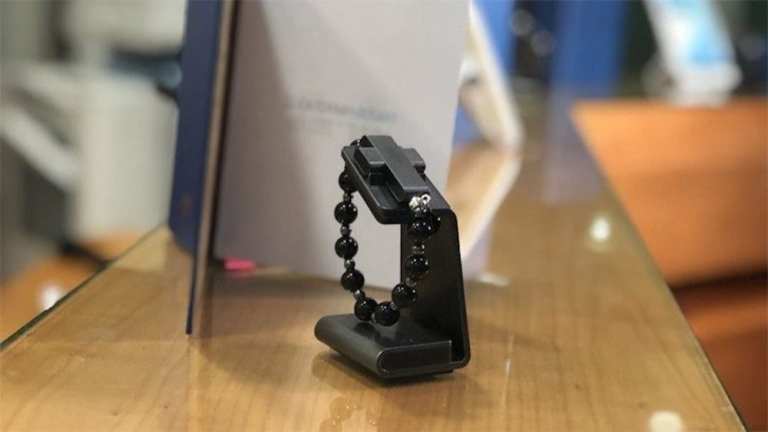
According to data released by Pew this week, America’s churches have an attendance problem. In a telephone survey conducted between this year and last, Pew found that 65 percent of American adults describe themselves as Christians when asked about their religion, down from 77 percent in 2009.
Where have all those church patrons gone? Well according to the data, literally nowhere. The number of those polled who describe themselves as having no religion whatsoever is now more than a quarter of the population at 26 percent, up from 17 percent a decade ago.
Protestant and Catholic churches are both losing members, though not quite at equal rates. A decade ago 51 percent of practicing Christians defined themselves and Protestants and today that figure has fallen to 43 percent; while about 23 percent of Christians were Catholic 10 years ago, that figure is now 20 percent.
Why organized religion is seeing such a significant opt out migration is well beyond our area of expertise here at PYMNTS — we will leave that to the world’s leading theologians to ponder. But we couldn’t help but notice that at the same time one set of headlines was about the decline of organized religion, another set was about one rather out-of-the-box method employing smart technology to gather the sheep.
Specifically, a set of “smart” rosary beads that will connect users to the cloud.
As we learned, smart rosary beads may be new, but they are hardly the only example of churches looking for help from a different sort of higher power when it comes to bringing more members back to the fold.
The Rosary Upgrade No One Knew They Needed
Though we’ve observed many times here at PYMNTS that we are on the verge of every conceivable object having a “smart” version someday, even we were surprised to hear the Vatican was getting in on the act with its own set of smart rosary beads.
But nonetheless, according to reports, the Catholic Church has officially gotten behind a “Click to Pray eRosary.” The wearable is dormant until such time as it detects its user making the sign of the cross. For non-Catholic readers, rosary beads are not worn as a necklace, they are held in the hand of a person who is praying. The Click To Pray eRosary can be held, but can also be worn as a bracelet. It is made up of 10 consecutive black agate and hematite rosary beads, plus a data-storing “smart cross.” Once active, users can opt to pray a standard rosary, a contemplative rosary or a thematic rosary, which will be updated throughout the year. The device logs the user’s progress through each prayer in the rosary prayer cycle and keeps track of each rosary completed.
The smart rosary comes with a support app, which is meant to enhance the educational experience with personalized religious content, as well as health-tracking info gleaned from the bracelet.
It is currently being sold for around $110.
As of today, it seems the Click to Pray eRosary is the first device of its kind in the market. We like to think that no one will actually try to compete with this particular wearable, but if someone does, we hope it’s Apple — purely because we look forward to hearing Tim Cook introduce the world to ApplePray from the Steve Jobs Theater next September.
And if you’re saying to yourself, that’s never going to happen — well, you’re probably right. Then again, churches are quietly becoming more high-tech places than they generally get credit for.
The Digital Flock
The Vatican’s move this week is certainly its biggest — and weirdest — move into technology thus far, but it is not the first. The Vatican was an early adopter of the iPhone, and rolled out its first app on 2008. Pope Francis has had an Instagram account since last March and as of today has 6.3 million followers. Granted, he’s not Kim Kardashian (who has 147 million followers), but he’s doing a lot better than Kanye West, who has fewer than 500,000.
In its less public-facing adaptations, the Vatican also spent 65 nights taking 270,00 high-resolution digital photos of the Sistine Chapel earlier this year, to create a permanent record for future restorations of the space.
And, in fact, back-end technological improvements have helped churches in ways a lot less predictable than preserving the art.
Christ Church East Greenwich in England, for example, has supplemented its traditional collection plate with one that accepts contactless payments, according to BBC reports. Parishioners don’t traditionally carry cash, Rev. Margaret Cave noted, and the contactless option inclines people to be more generous.
“Where we would traditionally just pass around the velvet collection bag, we now use a contactless card reader as well, which has increased donations,” she said. “In fact, because my curate is leaving, we set up the card reader with several donation options the other day and ended up raising £200 for his present from the congregation who were using their Apple watches to pay.”
Some members prefer to use cash, but no one has complained, she said, and many parishioners have in fact applauded the move.
Whether technological upgrades such as smart rosaries or contactless collection plates will solve the membership issues modern churches face is impossible to say. But it at least seems possible that what is true of physical retail is also true of religion: customers like a smooth experience, and if you can offer them one with technology it can only help them be more enthused about coming back.